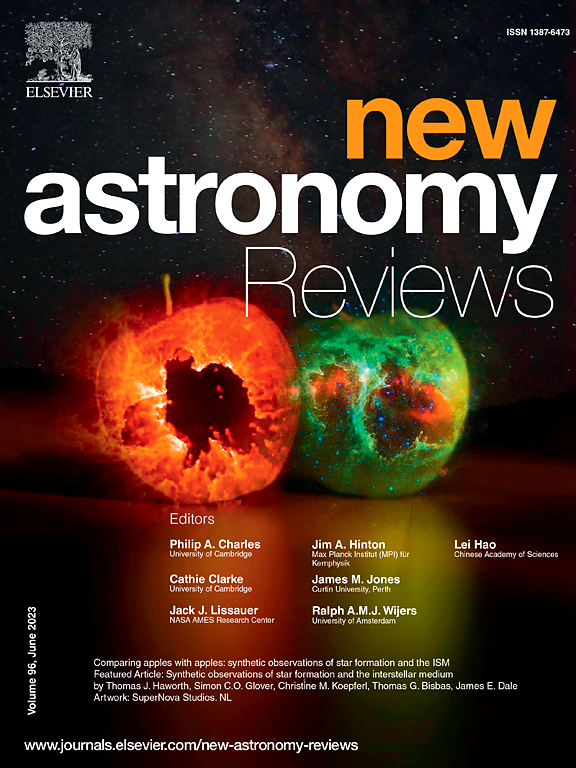Milky Way dynamics in light of Gaia
IF 26.8
2区 物理与天体物理
Q1 ASTRONOMY & ASTROPHYSICS
引用次数: 0
Abstract
The Gaia mission has triggered major developments in the field of Galactic dynamics in recent years, which we discuss in this review. The structure and kinematics of all Galactic components – disc, bar/bulge and halo – are now mapped in great detail not only in the Solar neighbourhood, but across a large part of the Milky Way. The dramatic improvements in the coverage and precision of observations revealed various disequilibrium processes, such as perturbations in the Galactic disc and the deformations of the outer halo, which are partly attributed to the interaction with satellite galaxies. The knowledge of the gravitational potential at all scales has also advanced considerably, but we are still far from having a consistent view on the key properties of the Galaxy, such as the bar pattern speed or the mass profile and shape of the dark halo. The complexity and interplay of several dynamical processes makes the interpretation of observational data challenging, and it is fair to say that more theoretical effort is needed to fully reap the fruit of the Gaia revolution.
盖亚之光下的银河系动态
近年来,盖亚任务引发了银河系动力学领域的重大发展,我们在本文中进行了讨论。银河系所有组成部分的结构和运动学——盘状、棒状/凸起和光晕——现在不仅在太阳附近,而且在银河系的大部分地区都被绘制得非常详细。观测范围和精度的显著提高揭示了各种不平衡过程,例如银盘的扰动和外晕的变形,这些过程部分归因于与卫星星系的相互作用。所有尺度上的引力势的知识也有了相当大的进步,但我们对银河系的关键特性仍然没有一个一致的看法,比如条形速度或暗晕的质量轮廓和形状。几个动态过程的复杂性和相互作用使得观测数据的解释具有挑战性,公平地说,需要更多的理论努力才能充分收获盖亚革命的成果。
本文章由计算机程序翻译,如有差异,请以英文原文为准。
求助全文
约1分钟内获得全文
求助全文
来源期刊

New Astronomy Reviews
地学天文-天文与天体物理
CiteScore
18.60
自引率
1.70%
发文量
7
审稿时长
11.3 weeks
期刊介绍:
New Astronomy Reviews publishes review articles in all fields of astronomy and astrophysics: theoretical, observational and instrumental. This international review journal is written for a broad audience of professional astronomers and astrophysicists.
The journal covers solar physics, planetary systems, stellar, galactic and extra-galactic astronomy and astrophysics, as well as cosmology. New Astronomy Reviews is also open for proposals covering interdisciplinary and emerging topics such as astrobiology, astroparticle physics, and astrochemistry.
 求助内容:
求助内容: 应助结果提醒方式:
应助结果提醒方式:


